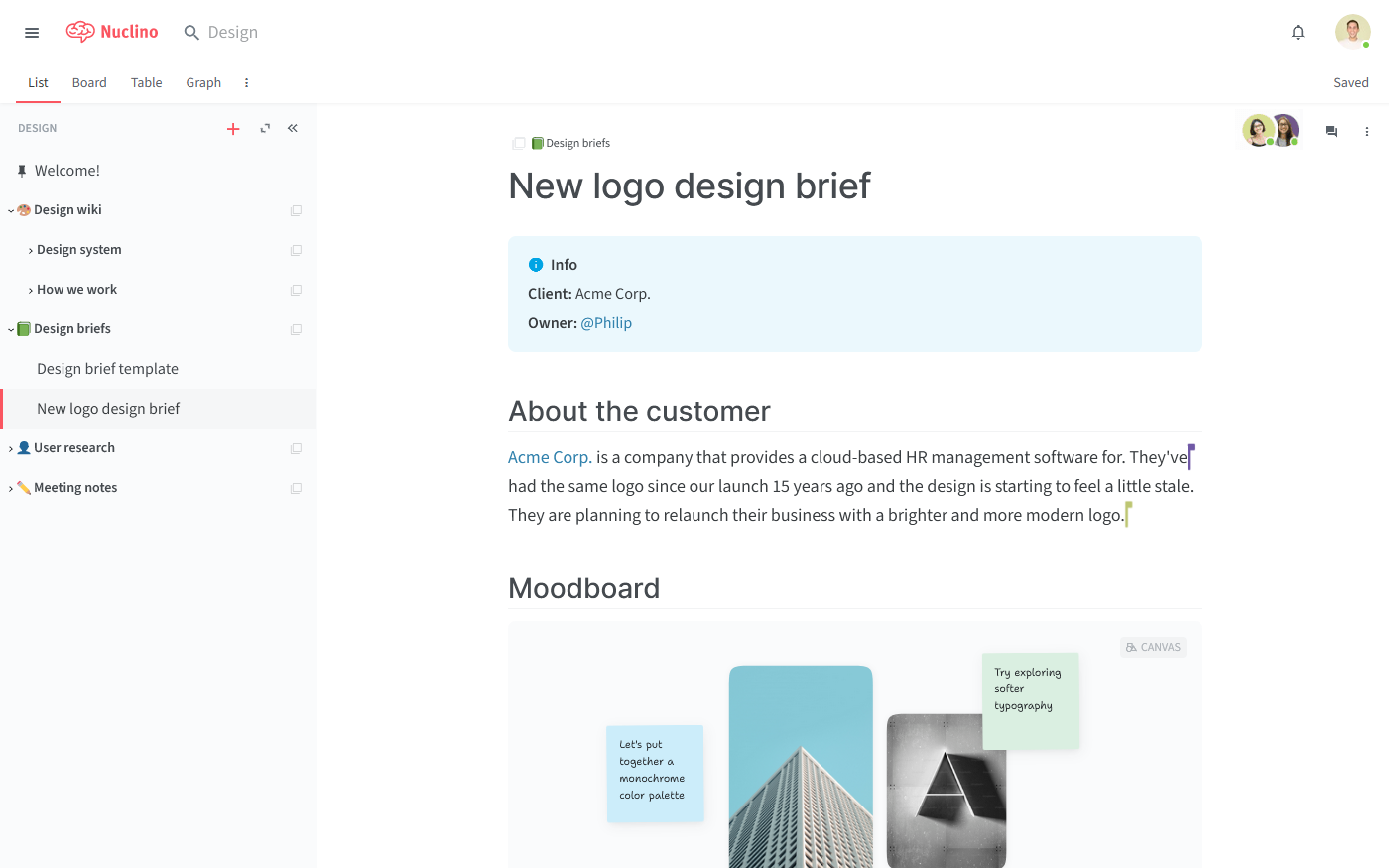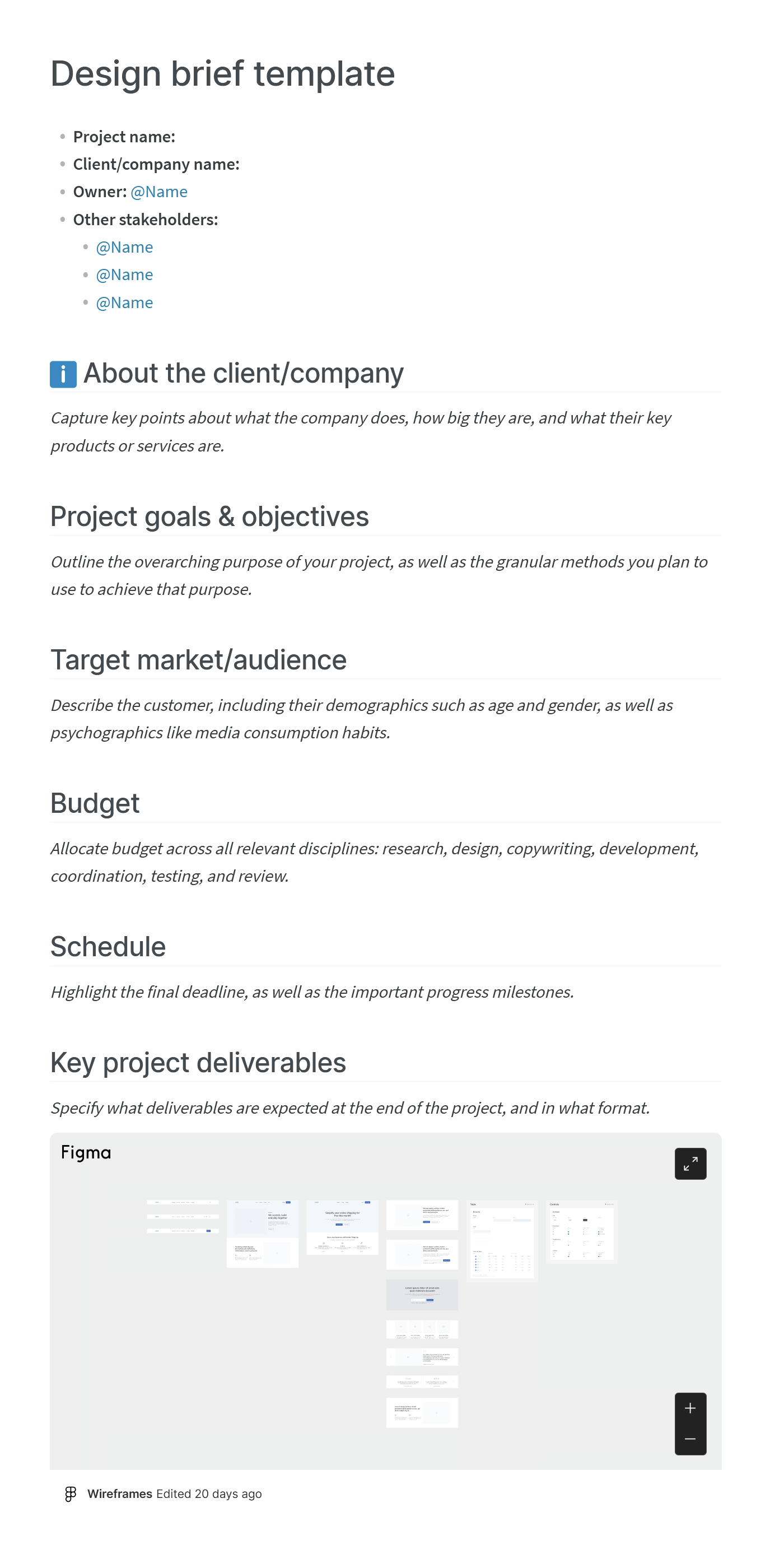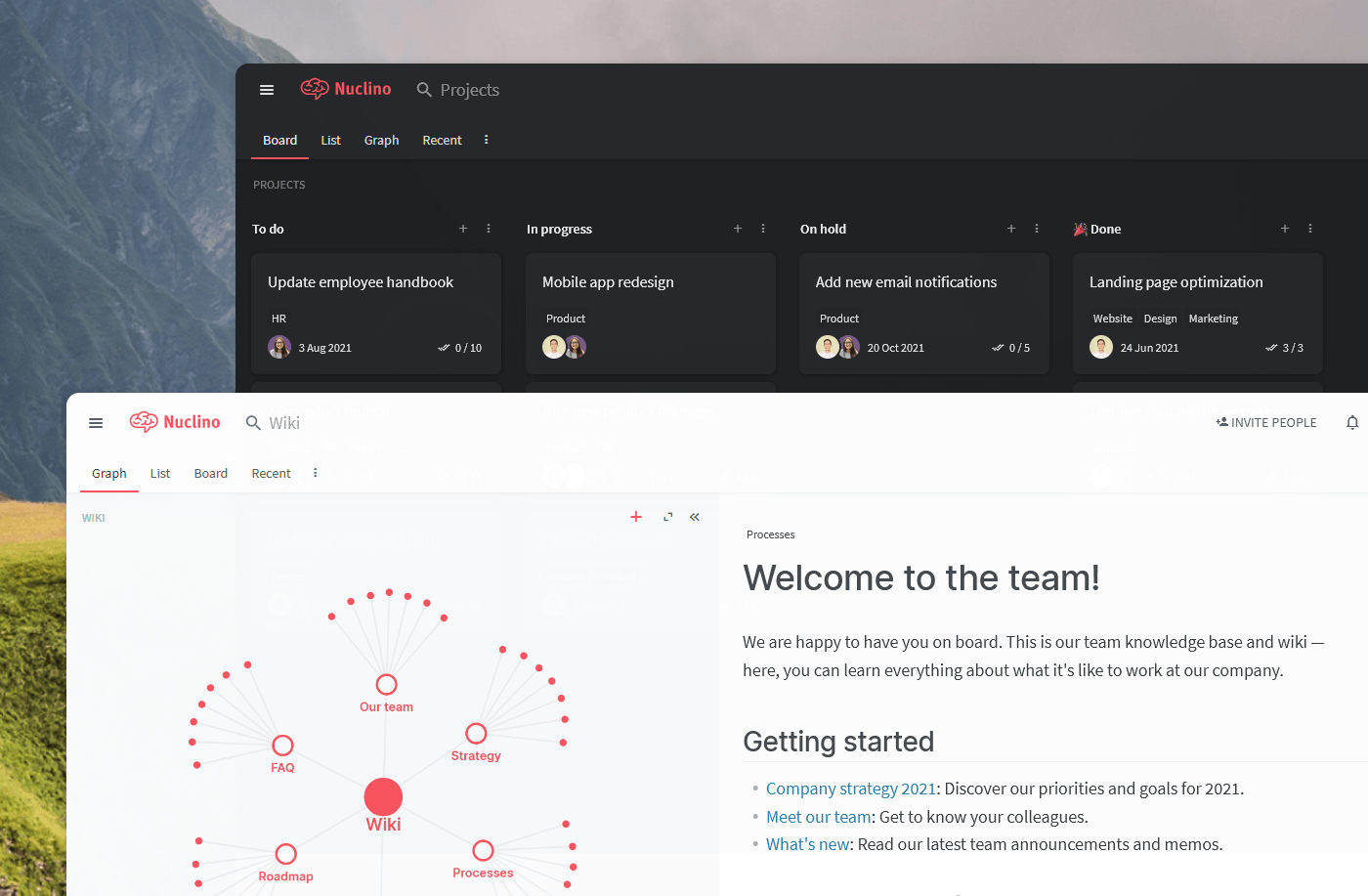What Is a Design Brief and How to Write It
Learn how to stay aligned and keep your design project on track.
In order for the designer to do the best job they can, first, it's crucial to understand exactly what the design task requires.
This is where the design brief comes in. When done correctly, it becomes a vital communication tool for your design project. Running a project without it usually means relying on phone calls, long email threads, notes, and messages, which inevitably results in chaos. Whether you are a design agency or a company commissioning the design, with a brief, you have a single guiding document for your entire design process.
Let's go into what design briefs are and how to write them.
- What is a design brief?
- How to write a design brief
- What to include in a design brief
- Design brief template
What is a design brief?
A design brief is a document that defines the core details of your upcoming design project, including its goals, scope, and strategy. It needs to define what you, as a designer, need to do, and within what constraints. In many ways, it works like a roadmap or a blueprint, informing design decisions and guiding the overall workflow of your project, from conception to completion.
Most importantly, a well-crafted brief should help you make sure that there is full agreement among the stakeholders on project deliverables, budget, and schedule.
Here's an example of a design brief created in Nuclino, a unified workspace where teams can bring all their knowledge, docs, and projects together in one place. Create an account and start writing your own design briefs:

An example of a logo design brief in Nuclino
Visual collaboration is seamlessly built into Nuclino, allowing you to add an infinite collaborative canvas to any design brief. You can use it to build creative moodboards, brainstorm ideas using sticky notes, create diagrams, and more.
How to write a design brief
Since most design projects are collaborative and involve multiple stakeholders, carefully consider where you are going to write your design brief. Creating it in a Word document would mean having to deal with emails, bouncing around your team's inboxes, and outdated attachments. Using a document sharing tool that facilitates collaboration, such as Google Docs or Nuclino, could help you ensure everyone always has the latest version of the brief and make it easy to provide their input.
Regardless of the tool you use, the most important task is deciding what content to include. After all, a design brief is only valuable if it captures the correct, relevant, and up-to-date information, emphasizes Lina Lugova, the CMO of Epom, a demand side platform.
It can take many forms and follow many different templates. Every design project is different, so there’s no fixed formula for the perfect brief. It can be a very formal, long, and detailed document, or it can be a simple and short one-pager. However, there are several essential elements that make a great brief.
What to include in a design brief
Project overview
The project overview section of your brief should provide a clear and concise description of your design project. It should cover the what and why behind your project. For example: "We need a logo design for use online or in print", or "we need a logo animation in the MP4 format to be used in the introduction of our product tutorial videos" or "we are looking for a web design agency to undertake a custom project for our brand and website, delivering wireframes, mockups, interactive prototypes, and production-ready web design assets."
You can formulate this section by asking yourself or your client the following questions:
What are we building?
What design problem are we trying to solve?
What assets are expected at the completion of the project?
Goals and objectives of the new design
One of the most important steps in planning a design project and writing your design brief is aligning on what you (or your client) want to achieve with the new design.
Make a distinction between goals and objectives. Goals describe the overall purpose of the project, for example, create a memorable brand identity in a cost-effective way. Objectives are concrete measures of success in reaching a goal, for example, delivering a full set of brand assets within four weeks, or getting positive feedback from at least 80% of surveyed users. The more specific and unambiguous these are in the project brief, the clearer the path will be for your work. Here are some questions that may help get clarity on project goals and objectives:
What would an ideal outcome look like for this project?
Are you redesigning an existing artifact? Why?
Is this the first time you are trying to tackle this design problem?
For example, if your project involves cutting-edge technologies like IoT product engineering, include specific performance metrics or benchmarks that the final design should meet, ensuring a clear standard for success. Or, if you are working on a new website design for a SaaS product, a key goal could be to enhance user experience and improve conversion rates. Specific objectives could be measurable improvements in bounce rates, time on page, or conversion rates, providing clear markers of success for the project.
Target market or audience
Understanding your audience is the first step in addressing their needs in the best possible way. Take your ideal customer, and build your persona around them. Outline their demographic traits and psychographic characteristics, as well as the problems you want to solve for them through your product.
Who is your ideal customer?
What are their demographics, habits, and goals?
When and how will they be using your product?
For example, if you're a startup web design agency working on a new website for a seed-stage tech startup, the target audience might include early adopters, potential investors, or press contacts. In that case, the design should be optimized for credibility and conversion – fast-loading pages, clear messaging, strong visual branding, and prominent calls to action that drive sign-ups or demo requests.
Budget and schedule
Understanding the budget and agreeing to a timeline are critical steps in the briefing process. Clarifying these constraints and expectations upfront is necessary for keeping the project on track and avoiding conflicts and scope creep down the road. Both, the schedule and the budget should be realistic and flexible enough to account for potential changes or unexpected obstacles.
Try asking these questions to gather the information you need:
What are the budget constraints on this project? How flexible are they?
What internal deadlines does this project need to align with?
What are the key milestones within the project?
Project deliverables
Aligning on project deliverables is one of the core purposes of the design brief. Even a small misunderstanding can create major problems if not addressed as soon as possible. Here are some questions that may help you clarify which deliverables you would need:
What do you or your client expect to receive at the end of the project?
What file formats should work be supplied in?
What sizes and resolutions are needed?
Other relevant information
Depending on the project, you may need to include additional details in your brief. For example:
Who are the main competitors?
Are there any "do nots"? Any features or creative directions you want to reject upfront?
Who will do the final approval? Who will have the power to approve or reject your work at the end of the project?
Design brief template
There is no one-size-fits-all when it comes to design briefs. The exact format needs to be defined by your own internal design workflow.
However, having a template that you can use as your starting point for each project you work on can certainly save you a lot of time and ensure you don' miss anything important. Here is a sample template you can use for inspiration when creating your own.

Design brief template in Nuclino
Once you have created your brief, don't forget to keep it up-to-date and make sure to make it easily accessible to all relevant stakeholders. It's important to remember that it's never fully finished until the project is complete – instead, it continuously evolves as part of the design process. You may need to revise it several times over the course of the project, for example, when you get new input from your clients or your team.
If you are using a tool like Nuclino, you can collaboratively edit your brief in real time and comment on specific sections. The document can be easily shared with external stakeholders using a shared link. Finished deliverables – files, images, Figma designs, and so on – can be embedded or uploaded directly into the brief, making it easy to manage your entire design project within a single document.
Nuclino: Your team's collective brain

Nuclino brings all your team's knowledge, docs, and projects together in one place. It's a modern, simple, and blazingly fast way to collaborate, without the chaos of files and folders, context switching, or silos.
Create a central knowledge base and give your team a single source of truth.
Collaborate in real time or asynchronously and spend less time in meetings.
Manage and document your projects in one place without losing context.
Organize, sort, and filter all kinds of data with ease.
Integrate the tools you love, like Slack, Google Drive, Figma, Lucidchart, and more.
Ready to get started?
